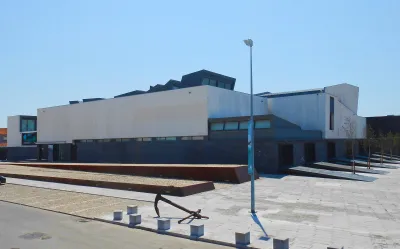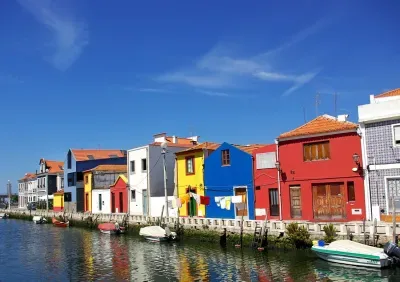
Museu Marítimo de Ílhavo
The Maritime Museum of Ilhavo (MMI) is a modern architectural gem a short drive south of Aveiro, which houses a fascinating collection of all things connected to the history of cod fishing, a stunning codfish aquarium and the country’s largest collection of shells. A few kilometres away, as an extension of the museum, the Santo Andre Ship Museum is a real decommissioned fishing trawler which visitors can explore to get a true picture of what life is like on board.
There's been a maritime museum here since 1937, but the original building was completely remodelled in 2001 to provide the awe-inspiring modernist building that we see today. Even if you have no particular interest in learning about the area’s maritime heritage, the museum is well worth a visit simply to marvel at the stunning design.
A highlight of any visit is a look around the Faina Maior, a superbly crafted replica of a fishing vessel which in days gone by would have set sail on the arduous journey from Aveiro to the distant waters off Newfoundland in search of Portugal's beloved codfish. Cut-away sections allow visitors to see the captain’s quarters, the shared bunks of the workers and the ship's galley. On the decks are stacked-up dories, the single-man craft on which the fishermen would be lowered into the icy sea waters for shifts of up to 18 hours daily. You’ll get a real, if somewhat sanitized picture of the harsh life endured by these brave individuals.
The museum also houses a good collection of other local boats which once sailed in the lagoons around Aveiro, as well as an art gallery and a vast seashell collection from around the world, donated to the museum by French collector Pierre Delpeut. For many visitors, the best part of any visit is the recently-added two-storey aquarium, which gives an opportunity to get up-close-and- personal with a variety of different species of surprisingly large cod. The experience can be wonderfully calming.
Most of the information boards are in Portuguese without English translations, but don’t let this put you off. There is an English information leaflet available at the reception desk, and the visual experience on offer here is enough for most visitors, without the need for detailed explanations.
The building has a coffee shop as well as a library, conference room and laboratories. The museum is closed on Mondays and provides free entry on the second Sunday of each month.
Address
Phone
Link
Attraction type
